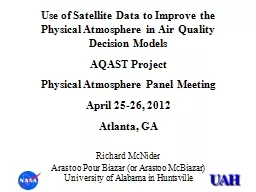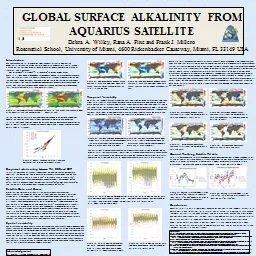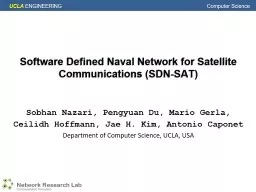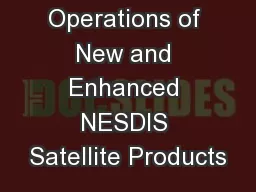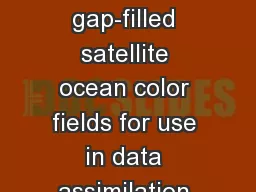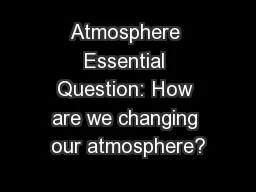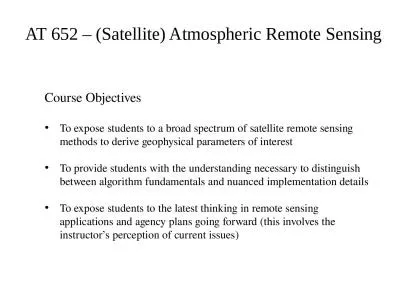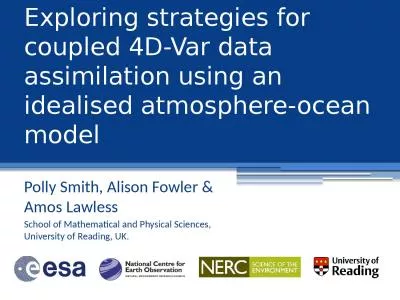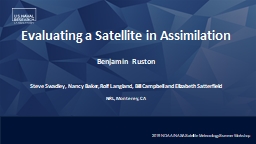PPT-Use of Satellite Data to Improve the Physical Atmosphere
Author : cheryl-pisano | Published Date : 2017-06-13
in Air Quality Decision Models AQAST Project Physical Atmosphere Panel Meeting April 2526 2012 Atlanta GA Richard McNider Arastoo Pour Biazar or Arastoo McBiazar
Presentation Embed Code
Download Presentation
Download Presentation The PPT/PDF document "Use of Satellite Data to Improve the Phy..." is the property of its rightful owner. Permission is granted to download and print the materials on this website for personal, non-commercial use only, and to display it on your personal computer provided you do not modify the materials and that you retain all copyright notices contained in the materials. By downloading content from our website, you accept the terms of this agreement.
Use of Satellite Data to Improve the Physical Atmosphere: Transcript
Download Rules Of Document
"Use of Satellite Data to Improve the Physical Atmosphere"The content belongs to its owner. You may download and print it for personal use, without modification, and keep all copyright notices. By downloading, you agree to these terms.
Related Documents

